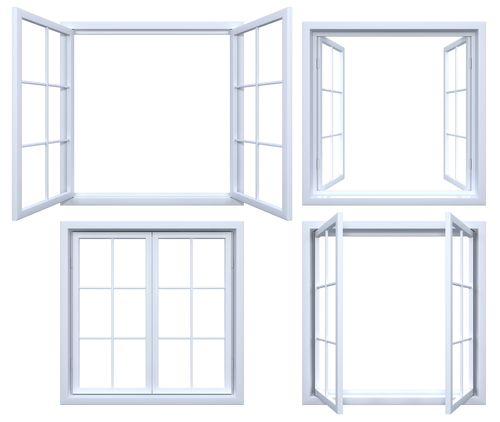Are you trying to decide between single-hung and double-hung windows? These popular style windows are many homeowners’ favorite because they can be used for different home designs and home styles to enhance the aesthetics. Single-hung windows and double-hung windows have a few things in common, but there are also differences between the two that set them apart, making one or the other more suited for your home. To help you make the proper selection between single-hung windows to double-hung windows for your home, we’ll look at the differences between them.
Single-Hung Window
A single-hung window is sometimes referred to as a single-sash window that features a lower, operable sash plus an upper, fixed one. The bottom portion of the window slides up and down, while the top part stays in place. With this window, ventilation comes through the lower sash.
Double-Hung Window
A double-hung window, also called a double-sash window, features two operable sashes — a top sash and a bottom sash — and the top sash slides up and down. The top sash and the bottom sash can both be opened to facilitate ventilation for enhanced comfort. The top sash function in a way that allows warm air to escape a space, while the bottom sash opening allows cool air from the exterior to your home’s interior.
Cost Difference Between a Single-Hung Window and Double-Hung Window
On average, the price of a single-hung window is generally less high than a double-hung window. Whenever you consider the price, think about the moving parts and the material used to create each window. A single-hung window features fewer moving parts than a double-hung window, which means it will require fewer resources to make. In terms of material, wood is typically more expensive than other materials like vinyl or fiberglass.
Cleaning & Maintenance Difference Between a Single-Hung Window and Double-Hung Window
It’s easy to clean either a single-hung window or double-hung window from the interior of your house by spraying the glass with either a simple vinegar and water solution, then wiping the glass dry with microfiber or lint-free cloth. The frames, hardware, and trim can be wiped down simply with water and cloth. Cleaning the exterior of the lower sash of a single-hung may require tilting the sash inward, and cleaning the outside of your single-hung window can be done while standing on the exterior. The tilt-latches on both sashes of double-hung windows allow for cleaning the window’s exterior from inside the house.
Ventilation Difference Between a Single-Hung Window and Double-Hung Window
An adequate supply of ventilation is provided by a single-hung window and a double-hung window. However, there’s a difference in flexibility when looking at both windows. A double-hung window allows maximum ventilation since the top sash alone can be opened, the bottom sash alone can be opened, or both sashes can be extended to allow airflow in and out of your house. With a single-hung window, only the lower sash of the window can be opened to provide ventilation.
Energy-Efficiency Difference Between a Single-Hung Window and Double-Hung Window
Both single-hung and double-hung windows are designed with energy efficiency as a selling point. However, the window frame material typically lends an additional layer of efficiency. For instance, vinyl and fiberglass single-hung or double-hung windows feature multi-chambered frames and slow heat movement for warmer homes in the cold season and cool homes during the warm months. Wood is a natural insulator, and single- and double-hung windows made of wood frames have increased energy efficiency. Still, single-hung windows and a slight edge over double-hung windows are more energy-efficient, having a diminished chance of air infiltration due to more minor moving parts.
Installation Difference Between a Single-Hung Window and Double-Hung Window
Single-hung and double-hung windows are available in various installation methods and types, depending on your product selection. Both window types can be used in new construction, as well as remodel and replacement projects.
Size Difference Between a Single-Hung Window and Double-Hung Window
Single-hung windows are typically available in slightly taller heights and standard and custom sizes, depending on the selected product. Double-hung windows can be found in larger sizes compared to single-hung windows. Single-hung or double-hung windows are available in sizes as small as 2ft. wide X 3 ft. tall. Double-hung windows are open in large sizes, as much as 6ft. wide X 12 ft. tall.
Difference in Where to Use Single-Hung Windows and Double-Hung Windows
Single-hung windows and double-hung windows are usually found in traditional-style homes. Single-hung windows are popular options for authentic, historic-style homes, while double-hung windows are typical in colonial, traditional, and Victorian-style homes. Single-hung windows are more commonly used in bedrooms, kitchens, and rooms on the first floor of a house, while double-hung windows are widely used in kitchens, entertainment areas, busy family rooms, and rooms on the second floor of a home.
For more detail on single-hung and double-hung windows, contact Bay State Exteriors for expert information and guide. We’ll help you make the proper selection for your upcoming project. We are here for all your window needs.

